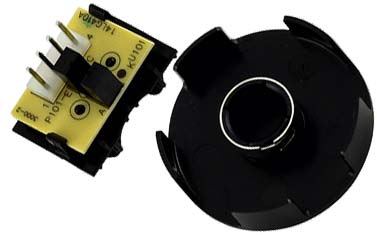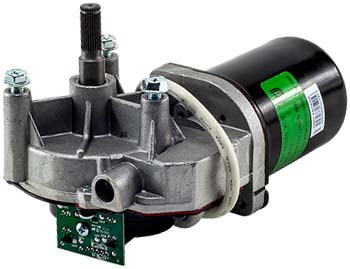Long gone are the days when the average garage door was opened manually. While those types of garage doors still exist, modern garage door systems have undergone significant technological innovations. Today, these systems not only allow for automatic opening and closing but also enhance accessibility, security, and safety of garage doors in residential homes. Here’s an overview of how technology has changed the garage door industry.
1. Safer Operation of Garage Door Openers
The US Safety Commission has issued final rules and safety requirements for automatic garage doors, requiring all garage door openers manufactured after 1993 to include the following safety features:
Photo Electric Eyes
Garage door photo eyes, also known as safety eyes or sensors, are designed to detect obstructions or objects in the door’s path. When an obstruction is detected, the infrared beam of the electric eye is interrupted, preventing the garage door from automatically closing. This feature helps prevent injuries to children, people, pets, and damage to property.
RPM Sensor
Another advancement in door opener technology that enhances garage door safety is the RPM sensor. This sensor is designed to measure the rotating speed of the opener’s motor.

If the garage door encounters an object and exerts excessive force, the sensor will detect a sudden change in the electric motor’s rotation speed and will halt its operation.
2. Enhanced Safety in Case of Breakage
Modern garage door systems equipped with ceiling-mounted garage door openers have added safety measures to prevent accidents when breakage occurs. For instance, overhead door systems come with springs that bear the weight of the garage door, allowing for effortless opening and closing.
Over time, these springs can wear out and break, making the garage door extremely heavy. This increased weight poses a risk of the garage door crashing down. However, modern ceiling-mounted openers are directly connected to the door’s top section and are robust enough to provide partial support for the door’s weight. This additional support reduces the likelihood of the garage door crashing in the event of spring breakage or the door coming off its tracks.
3. Wi-Fi Connection
The Wi-Fi connectivity feature is another advancement in modern door systems. Smart garage doors and garage door openers equipped with Wi-Fi and Bluetooth features allow you to control your garage door from your phone, tablet, and any other smart device. The opener also enables you to connect a motion-activated camera and remote LED lights.
These features can be set up and controlled from a single app, enabling you to monitor the garage door’s position in real-time and receive alerts if someone uses the door. Additionally, you can use the app to provide access to your garage for delivery drivers (Amazon Key), guests, or a repairman if you’re away when they arrive.
4. Rolling Code Technology
Rolling code is a security feature used in modern garage door systems to prevent unauthorized access. It works by constantly changing the code or signal that opens the garage door, making it extremely difficult for potential intruders to intercept and duplicate the code. Rolling code technology has greatly improved the security of garage door systems, as it has made it much harder for thieves to gain access using simple code-grabbing devices or techniques.
5. HomeLink’s Garage Door Integration
HomeLink is a wireless control system used in many modern vehicles to remotely operate garage doors, gates, and other home automation devices. It eliminates the need for separate remote controls and integrates these functions directly into a vehicle’s interior, typically through buttons on the rearview mirror or overhead console. Programming vehicles to the opener has made it more convenient for homeowners to open and close their garage doors without the need to carry additional remotes, further enhancing the integration of technology into everyday tasks.
6. DC Garage Door Openers
Brushless DC motors produce limited vibrations and generate extremely low electric noise. This is because they are designed to operate with a magnet rotor and a coil-wound stator. In contrast, more traditional brushed AC openers produce electrical noise and vibrations from the sparks that the brushes create when rotating over the commutator’s copper plates gaps.

DC door openers also have the ability to control speed by adjusting the current supply, allowing them to accelerate and decelerate. Most importantly, they can be powered by a backup power supply, and the majority of them come equipped with a rechargeable battery backup system that provides instant and continuous power in the event of a power outage. For example, if you live in California, state law requires you to install a door opener with a battery backup.
The Power of Advanced Garage Door Systems
Technological advancements in overhead garage doors have revolutionized the way people interact with their garage doors and homes. These innovations in overhead garage doors have streamlined daily routines and improved the quality of people’s lives by simplifying a once mundane task and making it more accessible and secure.
As technology continues to advance, it will be exciting to see how far these advancements in overhead door systems and garage door openers will go in providing homeowners and users with even more convenience, safety, and security.







